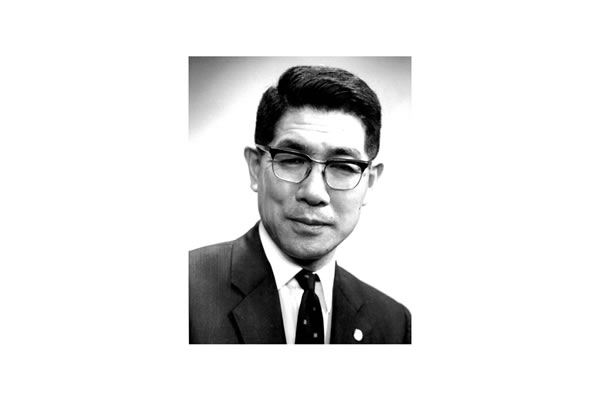How the Dale Carnegie Leadership Course Started – A Century of Practical Leadership for Real-World Results
❓ What problem did Dale Carnegie set out to solve?
As modern corporations grew, managers needed practical leadership skills—not just theory. Since 1912, Dale Carnegie has focused on persuasion, human relations, and immediately applicable tools that work in the real world.
Key Milestones in Dale Carnegie Leadership Training
FAQ
Q1. What makes Dale Carnegie leadership training different from MBA-style theory?
A1. It’s hands-on and immediately usable—coaching, delegating, motivating, running meetings, and persuasion skills that show results in days, not months.
Q2. How did Carnegie’s method evolve after WWII’s command-and-control era?
A2. It shifted from top-down models to human-centered leadership—communication, trust, and influence—better suited to peacetime corporations.
Q3. Which courses should new vs. experienced leaders take?
A3. Develop Your Leadership Potential for first-time leaders; Leadership Training for Results for seasoned leaders.
Q4. How is this relevant in Japan today?
A4. Japan Leadership Mastery translates global principles for Japan’s decision-making culture, risk norms, and relationship-driven business, giving leaders an immediate edge.
👉 From 1912 to today, Dale Carnegie’s leadership programs remain the blocking-and-tackling toolkit for managers—practical, persuasive, and proven across industries and generations.
As corporations scaled, owners delegated to professional managers—yet practical leadership training lagged. Dale Carnegie’s 1912 program began with communication and persuasion and, propelled by the 1936 classic How to Win Friends and Influence People, evolved into a comprehensive leadership system rooted in human relations.
Post–World War II, command-style leadership dominated the workplace, but it didn’t fit peacetime organizations. Dale Carnegie’s approach filled the gap with coaching, delegation, discipline, innovation, and meeting management—the real tools leaders needed.
In the early 1960s, internal efforts (John Cooper, Percy Whiting) merged with Whit Whitlow’s highly practical Management Seminar (1963), which later became the Dale Carnegie Supervision and Management Seminar (1967)and then Leadership Training for Managers (1992). Short-format innovations followed, and The Leader in You (1993) reinforced the philosophy. In 2019, research-driven updates produced Develop Your Leadership Potential and Leadership Training for Results, tailored respectively for new and experienced leaders.
The Japan Connection: To align global best practice with Japan’s consensus-building, risk posture, and high-context communication, Japan Leadership Mastery provides concrete frameworks for leading teams, influencing stakeholders, and executing change in Japanese business settings. This blend of global heritage + local mastery is why Dale Carnegie leadership training continues to produce promotable leaders and resilient organizations in Japan.
As modern corporations grew, managers needed practical leadership skills—not just theory. Since 1912, Dale Carnegie has focused on persuasion, human relations, and immediately applicable tools that work in the real world.
Key Milestones in Dale Carnegie Leadership Training
- 1912: Dale Carnegie launches training focused on communication and persuasion
- 1936: Global best seller How to Win Friends and Influence People fuels demand for leadership learning
- 1963: Management Seminar formed by merging internal programs with Whit Whitlow’s proven curriculum
- 1967: Renamed Dale Carnegie Supervision and Management Seminar
- 1976: New text Managing Through People supports the seminar
- 1992: Updated and renamed Leadership Training for Managers
- 1991–1993: Short-format leadership pilots; book The Leader in You published (Crom & Levine)
- 2019: Launch of Develop Your Leadership Potential (new leaders) and Leadership Training for Results(experienced leaders)
- Today (Japan): Modern, local perspective codified in Japan Leadership Mastery, connecting global principles to Japan’s business realities
FAQ
Q1. What makes Dale Carnegie leadership training different from MBA-style theory?
A1. It’s hands-on and immediately usable—coaching, delegating, motivating, running meetings, and persuasion skills that show results in days, not months.
Q2. How did Carnegie’s method evolve after WWII’s command-and-control era?
A2. It shifted from top-down models to human-centered leadership—communication, trust, and influence—better suited to peacetime corporations.
Q3. Which courses should new vs. experienced leaders take?
A3. Develop Your Leadership Potential for first-time leaders; Leadership Training for Results for seasoned leaders.
Q4. How is this relevant in Japan today?
A4. Japan Leadership Mastery translates global principles for Japan’s decision-making culture, risk norms, and relationship-driven business, giving leaders an immediate edge.
👉 From 1912 to today, Dale Carnegie’s leadership programs remain the blocking-and-tackling toolkit for managers—practical, persuasive, and proven across industries and generations.
As corporations scaled, owners delegated to professional managers—yet practical leadership training lagged. Dale Carnegie’s 1912 program began with communication and persuasion and, propelled by the 1936 classic How to Win Friends and Influence People, evolved into a comprehensive leadership system rooted in human relations.
Post–World War II, command-style leadership dominated the workplace, but it didn’t fit peacetime organizations. Dale Carnegie’s approach filled the gap with coaching, delegation, discipline, innovation, and meeting management—the real tools leaders needed.
In the early 1960s, internal efforts (John Cooper, Percy Whiting) merged with Whit Whitlow’s highly practical Management Seminar (1963), which later became the Dale Carnegie Supervision and Management Seminar (1967)and then Leadership Training for Managers (1992). Short-format innovations followed, and The Leader in You (1993) reinforced the philosophy. In 2019, research-driven updates produced Develop Your Leadership Potential and Leadership Training for Results, tailored respectively for new and experienced leaders.
The Japan Connection: To align global best practice with Japan’s consensus-building, risk posture, and high-context communication, Japan Leadership Mastery provides concrete frameworks for leading teams, influencing stakeholders, and executing change in Japanese business settings. This blend of global heritage + local mastery is why Dale Carnegie leadership training continues to produce promotable leaders and resilient organizations in Japan.
Relevant Pages
Dale Carnegie Tokyo Japan sends newsletters on the latest news and valuable tips for solving business, workplace and personal challenges.

 Company Information
Company Information President’s Greeting – Why Dale Carnegie Training Still Matters in Tokyo
President’s Greeting – Why Dale Carnegie Training Still Matters in Tokyo Yukinaga “Frank” Mochizuki: Father Of Dale Carnegie Training In Japan
Yukinaga “Frank” Mochizuki: Father Of Dale Carnegie Training In Japan Dr. Greg Story – 40-Year Japan Veteran, President of Dale Carnegie Training Tokyo
Dr. Greg Story – 40-Year Japan Veteran, President of Dale Carnegie Training Tokyo